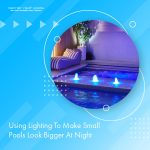As the sun sets and night falls, ensuring proper lighting becomes crucial for safety. Whether you're an outdoor enthusiast exploring nature, a homeowner aiming to secure your property, or a business owner looking to protect your premises, appropriate lighting can make all the difference. Well-placed lighting not only deters potential intruders but also provides visibility, preventing accidents and enhancing the overall ambiance of your surroundings. This post will guide you through the essentials of night-time lighting, from choosing the right fixtures to strategic placement, helping you create a safe and well-lit environment for various outdoor spaces. By the end, you'll have the knowledge to illuminate your pathways, gardens, and driveways effectively, ensuring peace of mind and security throughout the night.
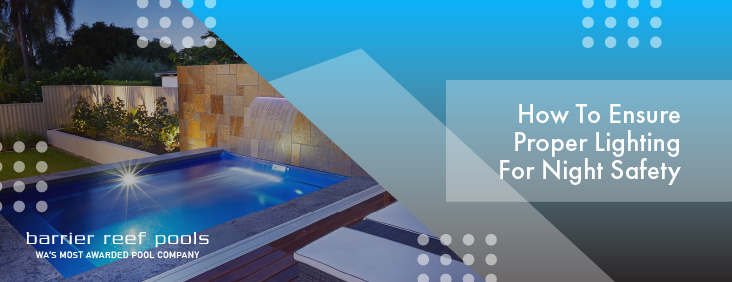
Understanding the Landscape
Before diving into the specifics of lighting, it’s essential to understand the landscape and the different types of outdoor areas that may require illumination for safety. These areas could include:
- Pathways and Walkways: Ensuring visibility to prevent trips and falls.
- Driveways and Garages: Enhancing security and ease of access.
- Gardens and Backyards: Creating aesthetically pleasing and safe environments.
- Entrances and Exits: Providing clear visibility for easy and secure access.
- Recreational Areas: Ensuring safe use of patios, decks, and pools after dark.
Each of these spaces presents unique safety concerns. For instance, poorly lit pathways can lead to accidents, while dark corners around your home can pose security risks. Understanding these concerns is the first step towards effective lighting solutions.
Lighting Essentials
When it comes to lighting your outdoor spaces, it’s crucial to strike a balance between aesthetics and functionality. Here are the three main types of lighting to consider:
Ambient Lighting
Ambient lighting provides overall illumination and enhances the general visibility of an area. It’s the primary light source and should be evenly distributed to prevent dark spots. Examples include:
- Wall-mounted fixtures
- Post lights
- Ceiling-mounted lights
Task Lighting
Task lighting focuses on specific areas where activities take place, such as paths, entrances, and driveways. It’s brighter and more focused than ambient lighting. Key options include:
- Path lights
- Bollard lights
- Step lights
Accent Lighting
Accent lighting highlights particular features, such as trees, statues, or architectural details. Although primarily decorative, it also contributes to safety by eliminating shadows. Popular choices are:
- Spotlights
- Floodlights
- Uplights
Balancing these three types of lighting ensures that your outdoor spaces are well-lit, reducing glare and shadows that can compromise safety.
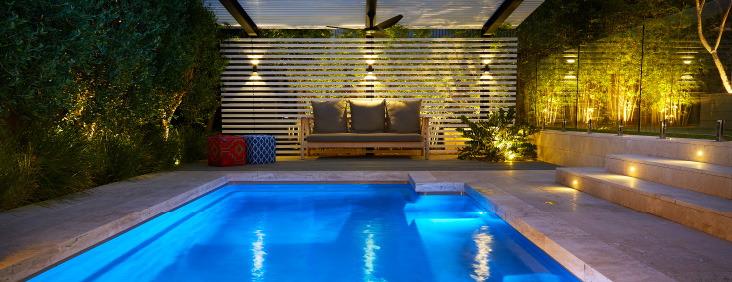
Choosing the Right Lights
Selecting the appropriate lighting fixtures involves considering factors to ensure they meet your needs and preferences. Here are some key considerations:
Energy Efficiency
Opt for energy-efficient lights, such as LEDs or solar-powered options, to reduce energy consumption and lower electricity bills. LEDs are particularly advantageous due to their long lifespan and low energy usage.
Durability
Outdoor lights must withstand various weather conditions. Look for fixtures made from durable materials like stainless steel, aluminium, or high-quality plastic. Ensure they have a suitable IP rating for water and dust resistance.
Brightness
The brightness of the lights should be adequate for their intended purpose. Measure brightness in lumens rather than watts, as this gives a more accurate indication of light output. Path lights, for instance, typically require 100-200 lumens, while floodlights may need 700-1300 lumens.
Modern Lighting Options
Consider modern lighting solutions that offer added benefits:
- Solar-Powered Lights: Ideal for eco-conscious individuals, these lights absorb sunlight during the day and illuminate your outdoor spaces at night.
- Motion-Activated Lights: These provide light only when movement is detected, enhancing security and conserving energy.
Installation and Positioning
Proper installation and positioning of your lights are crucial for maximising their effectiveness. Here are some tips:
Pathways and Walkways
Place lights along the edges of pathways and walkways to ensure they’re well-lit, preventing trips and falls. Ensure the lights are low enough to avoid glare but high enough to cast a broad light.
Driveways and Garages
Install lights on either side of the driveway entrance, and consider adding overhead lighting for garages to enhance visibility. Motion-activated lights can be particularly useful here.
Gardens and Backyards
Use a mix of ambient, task, and accent lighting to create a safe and inviting environment. Illuminate dark corners and shadowed areas to deter intruders.
Entrances and Exits
Position lights above or beside doorways to provide clear visibility for those entering or exiting. Wall-mounted fixtures or lanterns work well in these areas.
Recreational Areas
For patios, decks, and pools, consider installing lights on railings, steps, and around the perimeter to ensure safe use after dark.
When installing lights, always follow the manufacturer’s instructions and adhere to safety precautions. If you’re unsure about the installation process, consider hiring a professional.
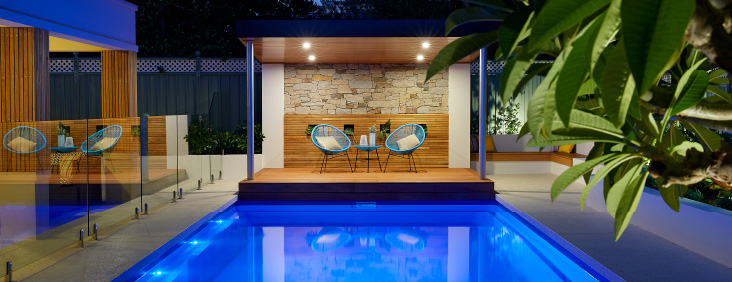
Maintenance for Longevity
Regular maintenance is essential to keep your outdoor lights functioning optimally and extend their lifespan. Here are some upkeep tips:
Cleaning
Periodically clean the light fixtures to remove dirt, debris, and cobwebs that can accumulate and reduce their brightness. Use a soft cloth and mild detergent to clean the fixtures, and avoid abrasive materials that can scratch the surfaces.
Checking for Damage
Inspect your lights regularly for signs of damage, such as cracks, corrosion, or loose connections. Replace any damaged components promptly to maintain safety and performance.
Replacing Bulbs
Replace burnt-out bulbs immediately to ensure consistent lighting coverage. When replacing bulbs, consider upgrading to more energy-efficient options, such as LEDs.
Adjusting Positions
Over time, lights may shift or become misaligned. Check their positions periodically and adjust them as needed to ensure they continue to illuminate the intended areas effectively.
Conclusion
Proper lighting is a critical component of night-time safety for outdoor enthusiasts and homeowners alike. By understanding your landscape, selecting the right lights, and maintaining them regularly, you can create a safe and inviting environment for all to enjoy.
Remember the key points: ensure a balance of ambient, task, and accent lighting; choose energy-efficient and durable fixtures; and place lights strategically to maximise their effectiveness. Taking these steps will enhance the safety and aesthetics of your outdoor spaces, providing peace of mind for you and your loved ones.
It’s time to take action! Start implementing these lighting tips today and transform your outdoor areas into safe havens for night-time activities.
How To Ensure Proper Lighting For Night Safety
As the sun sets and night falls, ensuring proper lighting becomes crucial for safety. Whether you're an outdoor enthusiast exploring nature, a homeowner aiming to secure your property, or a business owner looking to protect your premises, appropriate lighting can make all the difference. Well-placed lighting not only deters potential intruders but also provides visibility, preventing accidents and enhancing the overall ambiance of your surroundings. This post will guide you through the essentials of night-time lighting, from choosing the right fixtures to strategic placement, helping you create a safe and well-lit environment for various outdoor spaces. By the end, you'll have the knowledge to illuminate your pathways, gardens, and driveways effectively, ensuring peace of mind and security throughout the night.
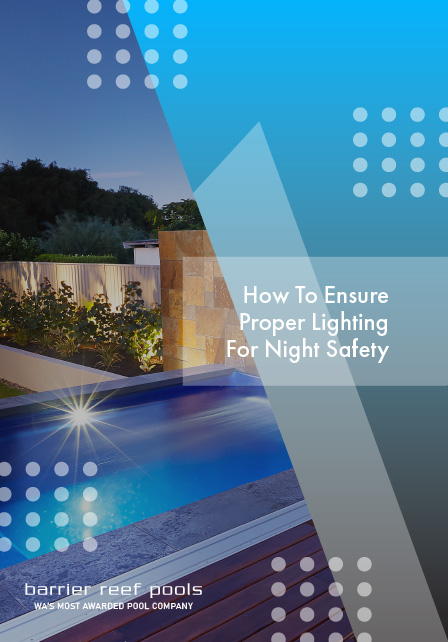
Understanding the Landscape
Before diving into the specifics of lighting, it’s essential to understand the landscape and the different types of outdoor areas that may require illumination for safety. These areas could include:
- Pathways and Walkways: Ensuring visibility to prevent trips and falls.
- Driveways and Garages: Enhancing security and ease of access.
- Gardens and Backyards: Creating aesthetically pleasing and safe environments.
- Entrances and Exits: Providing clear visibility for easy and secure access.
- Recreational Areas: Ensuring safe use of patios, decks, and pools after dark.
Each of these spaces presents unique safety concerns. For instance, poorly lit pathways can lead to accidents, while dark corners around your home can pose security risks. Understanding these concerns is the first step towards effective lighting solutions.
Lighting Essentials
When it comes to lighting your outdoor spaces, it’s crucial to strike a balance between aesthetics and functionality. Here are the three main types of lighting to consider:
Ambient Lighting
Ambient lighting provides overall illumination and enhances the general visibility of an area. It’s the primary light source and should be evenly distributed to prevent dark spots. Examples include:
- Wall-mounted fixtures
- Post lights
- Ceiling-mounted lights
Task Lighting
Task lighting focuses on specific areas where activities take place, such as paths, entrances, and driveways. It’s brighter and more focused than ambient lighting. Key options include:
- Path lights
- Bollard lights
- Step lights
Accent Lighting
Accent lighting highlights particular features, such as trees, statues, or architectural details. Although primarily decorative, it also contributes to safety by eliminating shadows. Popular choices are:
- Spotlights
- Floodlights
- Uplights
Balancing these three types of lighting ensures that your outdoor spaces are well-lit, reducing glare and shadows that can compromise safety.
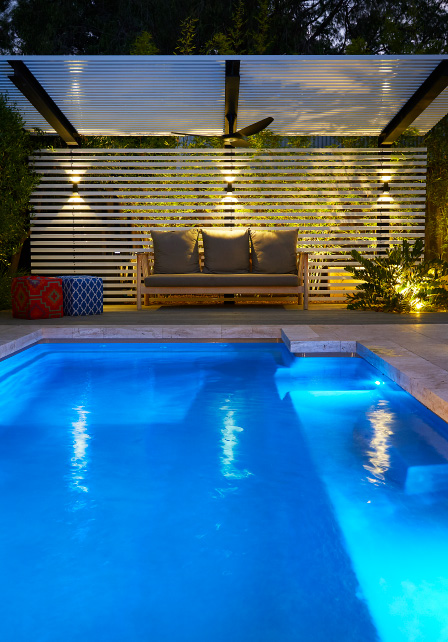
Choosing the Right Lights
Selecting the appropriate lighting fixtures involves considering factors to ensure they meet your needs and preferences. Here are some key considerations:
Energy Efficiency
Opt for energy-efficient lights, such as LEDs or solar-powered options, to reduce energy consumption and lower electricity bills. LEDs are particularly advantageous due to their long lifespan and low energy usage.
Durability
Outdoor lights must withstand various weather conditions. Look for fixtures made from durable materials like stainless steel, aluminium, or high-quality plastic. Ensure they have a suitable IP rating for water and dust resistance.
Brightness
The brightness of the lights should be adequate for their intended purpose. Measure brightness in lumens rather than watts, as this gives a more accurate indication of light output. Path lights, for instance, typically require 100-200 lumens, while floodlights may need 700-1300 lumens.
Modern Lighting Options
Consider modern lighting solutions that offer added benefits:
- Solar-Powered Lights: Ideal for eco-conscious individuals, these lights absorb sunlight during the day and illuminate your outdoor spaces at night.
- Motion-Activated Lights: These provide light only when movement is detected, enhancing security and conserving energy.
Installation and Positioning
Proper installation and positioning of your lights are crucial for maximising their effectiveness. Here are some tips:
Pathways and Walkways
Place lights along the edges of pathways and walkways to ensure they’re well-lit, preventing trips and falls. Ensure the lights are low enough to avoid glare but high enough to cast a broad light.
Driveways and Garages
Install lights on either side of the driveway entrance, and consider adding overhead lighting for garages to enhance visibility. Motion-activated lights can be particularly useful here.
Gardens and Backyards
Use a mix of ambient, task, and accent lighting to create a safe and inviting environment. Illuminate dark corners and shadowed areas to deter intruders.
Entrances and Exits
Position lights above or beside doorways to provide clear visibility for those entering or exiting. Wall-mounted fixtures or lanterns work well in these areas.
Recreational Areas
For patios, decks, and pools, consider installing lights on railings, steps, and around the perimeter to ensure safe use after dark.
When installing lights, always follow the manufacturer’s instructions and adhere to safety precautions. If you’re unsure about the installation process, consider hiring a professional.
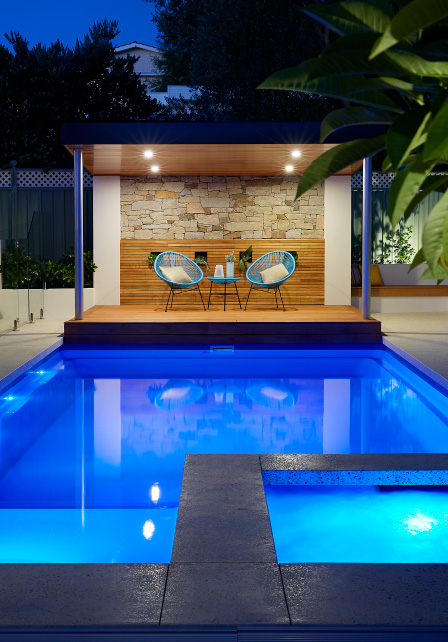
Maintenance for Longevity
Regular maintenance is essential to keep your outdoor lights functioning optimally and extend their lifespan. Here are some upkeep tips:
Cleaning
Periodically clean the light fixtures to remove dirt, debris, and cobwebs that can accumulate and reduce their brightness. Use a soft cloth and mild detergent to clean the fixtures, and avoid abrasive materials that can scratch the surfaces.
Checking for Damage
Inspect your lights regularly for signs of damage, such as cracks, corrosion, or loose connections. Replace any damaged components promptly to maintain safety and performance.
Replacing Bulbs
Replace burnt-out bulbs immediately to ensure consistent lighting coverage. When replacing bulbs, consider upgrading to more energy-efficient options, such as LEDs.
Adjusting Positions
Over time, lights may shift or become misaligned. Check their positions periodically and adjust them as needed to ensure they continue to illuminate the intended areas effectively.
Conclusion
Proper lighting is a critical component of night-time safety for outdoor enthusiasts and homeowners alike. By understanding your landscape, selecting the right lights, and maintaining them regularly, you can create a safe and inviting environment for all to enjoy.
Remember the key points: ensure a balance of ambient, task, and accent lighting; choose energy-efficient and durable fixtures; and place lights strategically to maximise their effectiveness. Taking these steps will enhance the safety and aesthetics of your outdoor spaces, providing peace of mind for you and your loved ones.
It’s time to take action! Start implementing these lighting tips today and transform your outdoor areas into safe havens for night-time activities.




